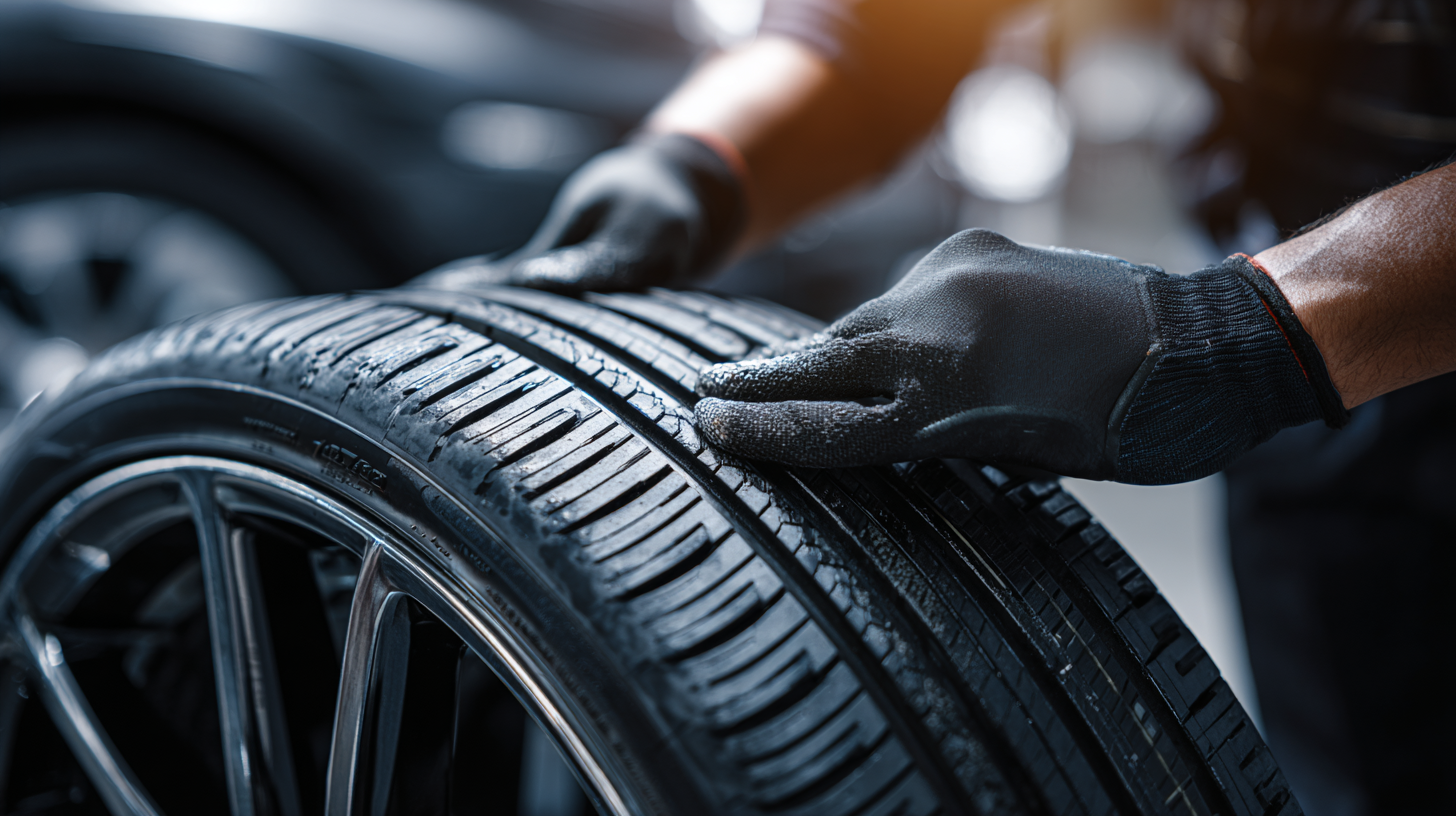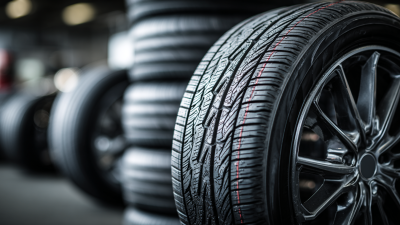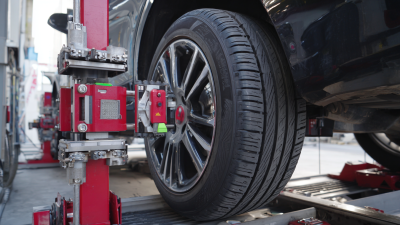The Ultimate Guide to Car Tyre Repair Techniques and Their Impact on Road Safety
In today's automotive landscape, the importance of effective car tyre repair techniques cannot be overstated, particularly when considering their direct impact on road safety. According to the Rubber Manufacturers Association, improperly maintained tyres contribute to approximately 33% of all vehicle crashes, highlighting the critical role that tyre integrity plays in accident prevention.

Moreover, a report by the National Highway Traffic Safety Administration indicates that underinflated tyres can reduce braking efficiency by up to 30%, emphasizing the need for timely and effective repair solutions. This guide delves into various car tyre repair methodologies, addressing common issues such as punctures, sidewall damage, and uneven wear, while exploring the benefits of regular maintenance and professional interventions.
By understanding these repair techniques and their implications, drivers can enhance their vehicle's performance and ensure safer journeys on the road.
Top 5 Essential Car Tyre Repair Techniques Every Driver Should Know
Maintaining your vehicle's tyres is crucial for road safety, and knowing essential repair techniques can make a significant difference. One of the top techniques is the puncture repair, which involves using a tyre plug or patch to seal a hole caused by a nail or sharp object. This process can be done quickly and effectively, helping drivers to immediately get back on the road without the need for a complete tyre replacement.
Another crucial technique is tyre rotation, which involves changing the position of tyres on the vehicle to ensure even wear. This is an essential maintenance routine that prolongs the lifespan of tyres and enhances performance. Drivers should also be aware of sidewall repairs. While not all sidewall damage can be fixed, knowing the techniques for assessing whether a tyre can be safely repaired is vital to avoid potential blowouts. Lastly, learning how to properly inflate tyres not only impacts fuel efficiency but also ensures optimal performance and safety while driving.
Understanding these fundamental repair techniques not only equips drivers with the skills they need in emergencies but also contributes significantly to overall road safety.
7 Signs Your Tyre Needs Immediate Repair and How to Address Them
When it comes to maintaining road safety, being vigilant about the condition of your tyres is paramount. Here are seven signs indicating that your tyre needs immediate repair.
Firstly, if you notice a significant drop in air pressure, this could mean a puncture or leak, which requires prompt attention. Additionally, irregular wear patterns on the tyre surface often signal alignment issues or internal damage that can compromise safety.
Another important sign is the presence of bulges or blisters on the tyre. These can indicate internal separation, which can lead to blowouts if not addressed. Furthermore, if you hear unusual noises while driving, it may suggest damage or foreign objects lodged in the tyre. Lastly, check for any visible cracks or cuts; these can expose the tyre to air loss and increase the risk of failure. Consistently monitoring these signs and addressing any issues promptly can significantly impact overall road safety, ensuring a safer driving experience for everyone.
3 Best Practices for Maintaining Tyre Health to Ensure Road Safety
Maintaining tyre health is critical for ensuring road safety, as studies indicate that under-inflated tyres can increase stopping distances by up to 30%. To minimize these risks, one of the best practices is to regularly check and adjust tyre pressures. The National Highway Traffic Safety Administration (NHTSA) recommends checking tyre pressure at least once a month and before long trips, as proper inflation can improve fuel efficiency and overall vehicle handling.
Another essential practice is to conduct regular tread inspections. According to the Tire Industry Association, tyres should have a minimum tread depth of 2/32 of an inch to maintain adequate traction and reduce the likelihood of hydroplaning. Drivers can use the penny test to easily gauge tread depth: place a penny in the tread groove with Lincoln’s head facing down; if you see the top of his head, it’s time to replace the tyres. Additionally, rotating tyres every 5,000 to 7,500 miles helps ensure even wear, extending the lifespan of the tyres and enhancing safety on the road. By implementing these best practices, drivers can significantly mitigate risks and contribute to overall road safety.
The 4 Key Tools for Effective Tyre Repair and Their Benefits
 When it comes to effective tyre repair, having the right tools is essential for ensuring safety on the road. The first key tool is a tyre repair kit, which typically includes puncture sealing solutions, plugs, and an insertion tool. These kits allow drivers to quickly address minor punctures and prevent air loss, enabling them to reach a proper repair facility without delay.
When it comes to effective tyre repair, having the right tools is essential for ensuring safety on the road. The first key tool is a tyre repair kit, which typically includes puncture sealing solutions, plugs, and an insertion tool. These kits allow drivers to quickly address minor punctures and prevent air loss, enabling them to reach a proper repair facility without delay.
Another important tool is a portable air compressor. This device not only helps inflate tyres but also allows for precise pressure adjustments. Maintaining the correct tyre pressure significantly impacts fuel efficiency and overall vehicle handling, which are critical for safe driving. Additionally, a tyre pressure gauge ensures that drivers can monitor and maintain optimal pressure levels.
Lastly, a tyre tread depth gauge plays a crucial role in assessing tyre health. Proper tread depth is vital for ensuring adequate grip on wet and dry surfaces. By regularly checking the tread depth, drivers can make informed decisions about when to repair or replace their tyres, ultimately enhancing their safety on the road.
8 Proven Tips to Enhance Your Tyre Repair Skills for Safer Driving
When it comes to ensuring road safety, mastering tyre repair techniques is essential for every driver. One of the most crucial tips is to regularly inspect your tyres for any signs of damage, such as cuts, bulges, or punctures. Early detection can prevent more severe issues down the line. Additionally, using a reliable patch or plug kit can make a significant difference in prolonging the life of a tyre after a repair. Make sure to follow the manufacturer's guidelines for the best results.

Another vital skill is learning how to properly inflate and balance tyres. Incorrect inflation can lead to uneven wear and serious blowouts, compromising safety. Use a pressure gauge to ensure your tyres are inflated according to specifications. Lastly, consider taking a tyre repair workshop or online course to gain hands-on experience. These sessions often provide insights into the latest repair technologies and techniques, equipping you with the knowledge to handle unexpected problems on the road. Investing time in enhancing your tyre repair skills translates directly into safer driving and greater peace of mind.
Related Posts
-

The Ultimate Guide to DIY Car Tyre Repair Techniques for Every Driver
-

Unlock Amazing Savings: The Ultimate Guide to Car Tyres Offers You Can't Miss!
-

The Real Factors Influencing Tire Alignment Cost: What Every Car Owner Should Know
-

Essential Tips for Choosing the Best Tire Repair Shop Near You
-

Understanding Tire Alignment Cost: What Affects Pricing and Why It Matters for Your Safety
-

Exploring the Impact of Tire Technology on Auto Performance and Safety in 2023